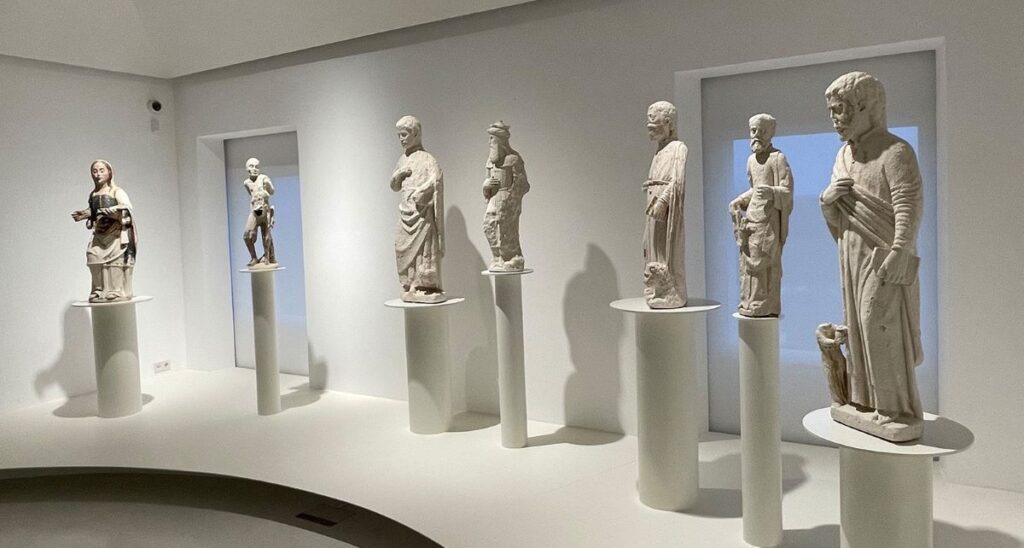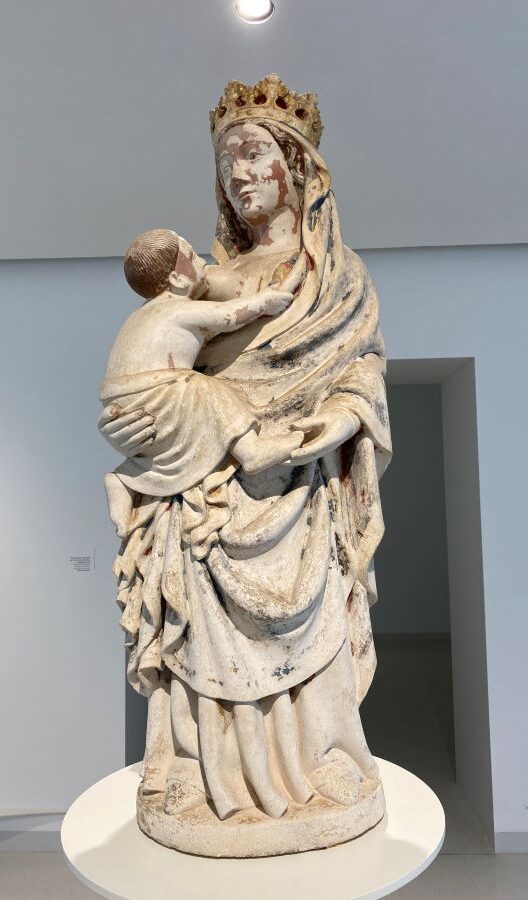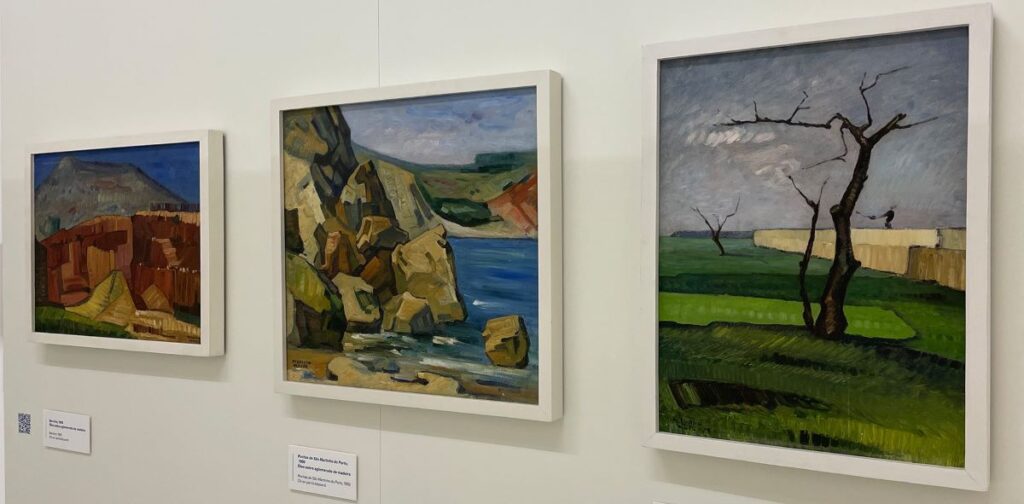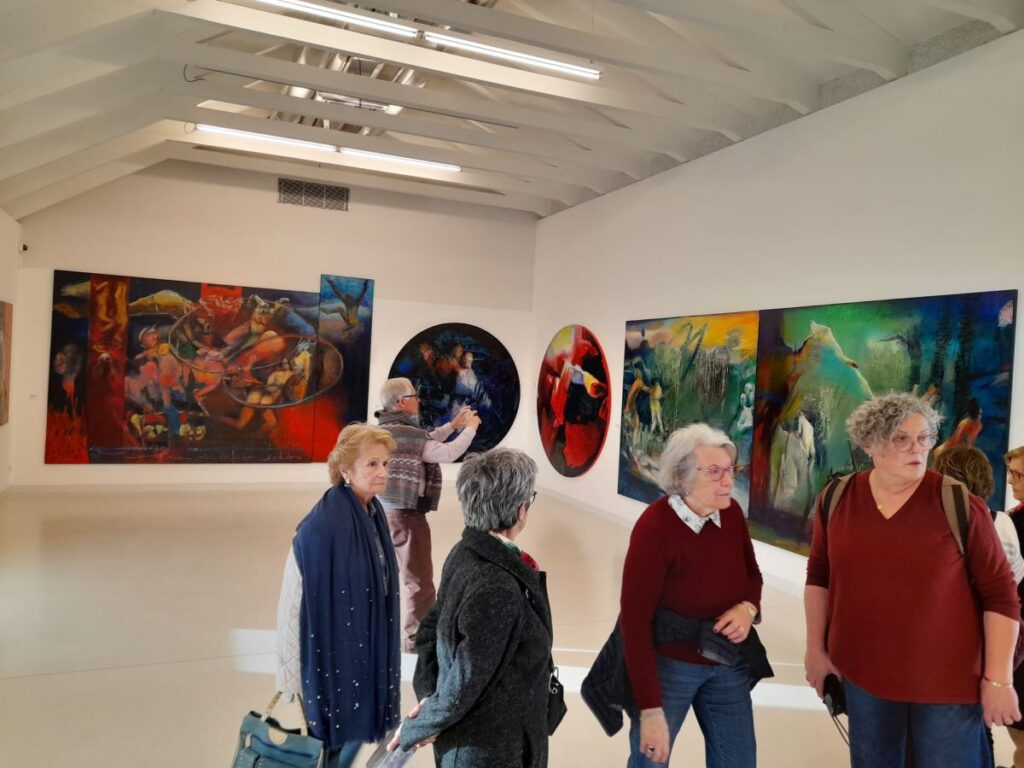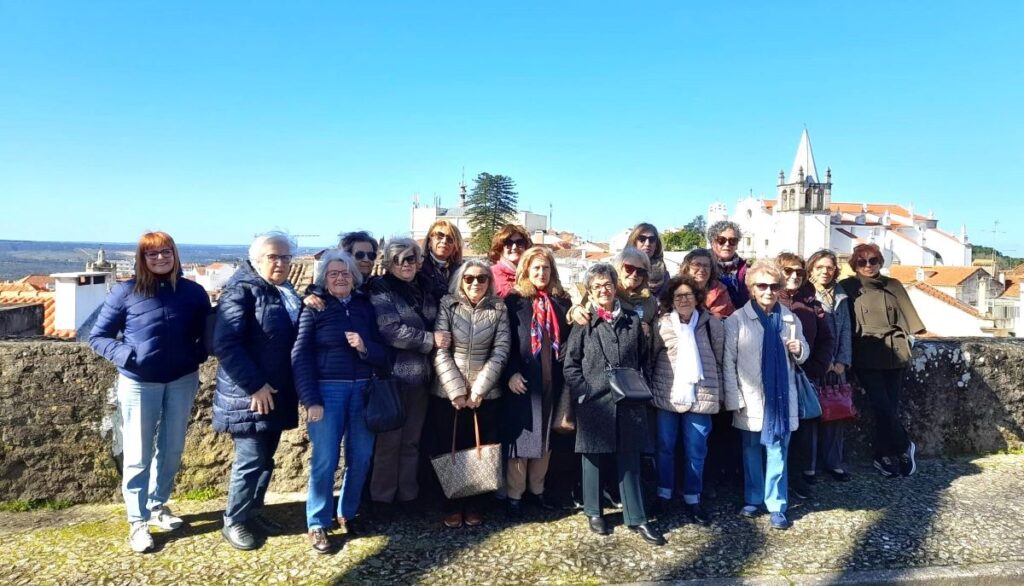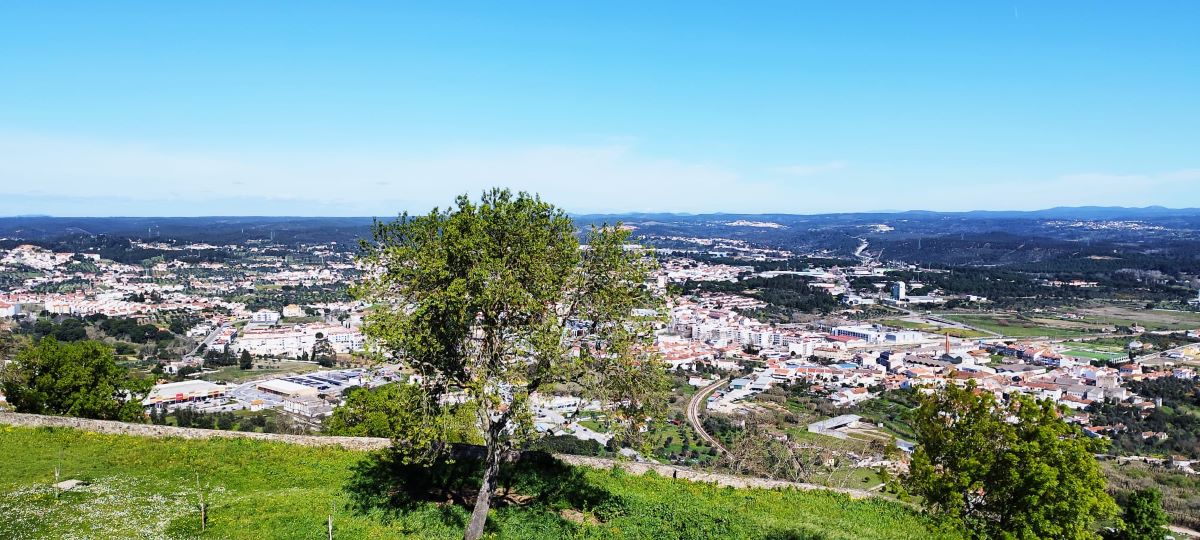The city of Abrantes breathes history. The tour began with a short walk through the streets of Abrantes, accompanied by a guide, to the castle-fortress of Abrantes. This castle is one of the most important elements of military architecture, with a 360º panoramic view over the moorland and a visit to the Almeidas Pantheon, housed in the Church of Sta Maria do Castelo.
The Almeidas Pantheon has a 16th-century altarpiece structure with Hispano-Moorish tiles and 16th-century frescoes and wall paintings. Among the various tombs are those of the Counts of Abrantes (15th and 16th centuries), in the flamboyant floral Gothic style.
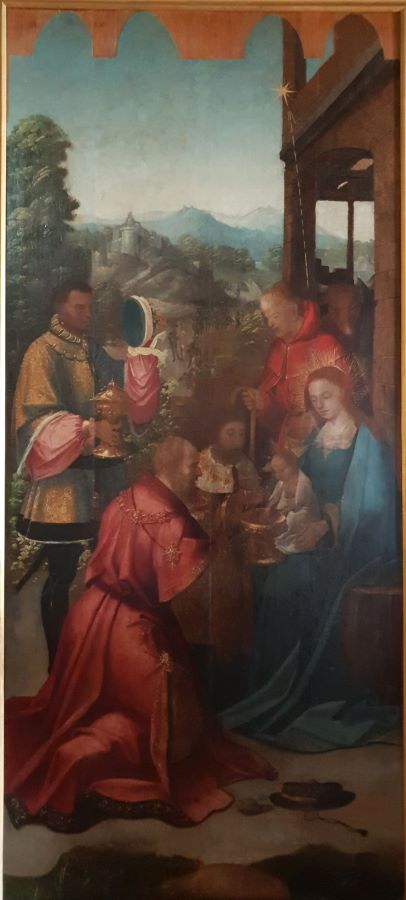
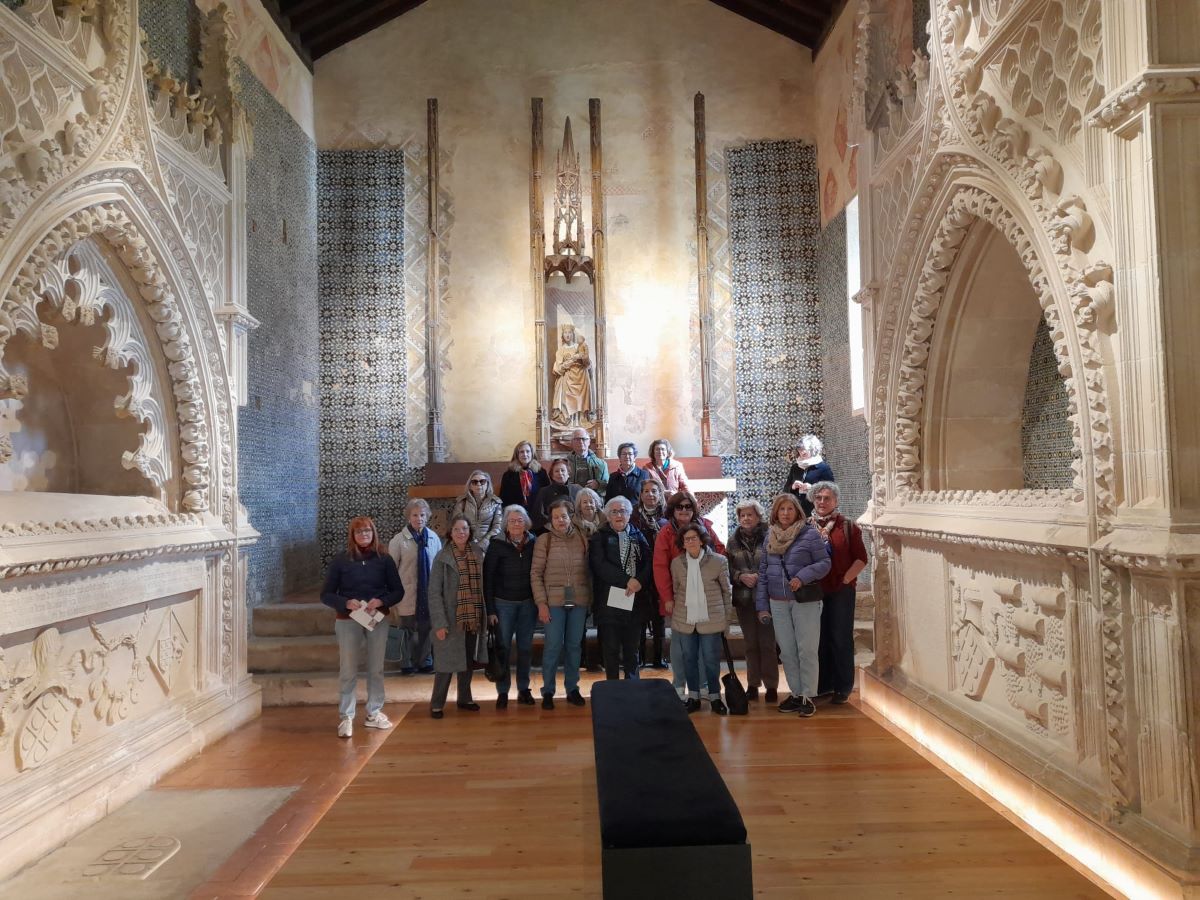
This was followed by a very good lunch at the “A Velha” restaurant. After lunch, we visited the Abrantes Iberian Museum of Archaeology and Art (MIAA) and then took part in a workshop on Abrantes sweets, held at the sweets factory. The tour ended at the factory’s patisserie, where we were able to taste various typical sweets.
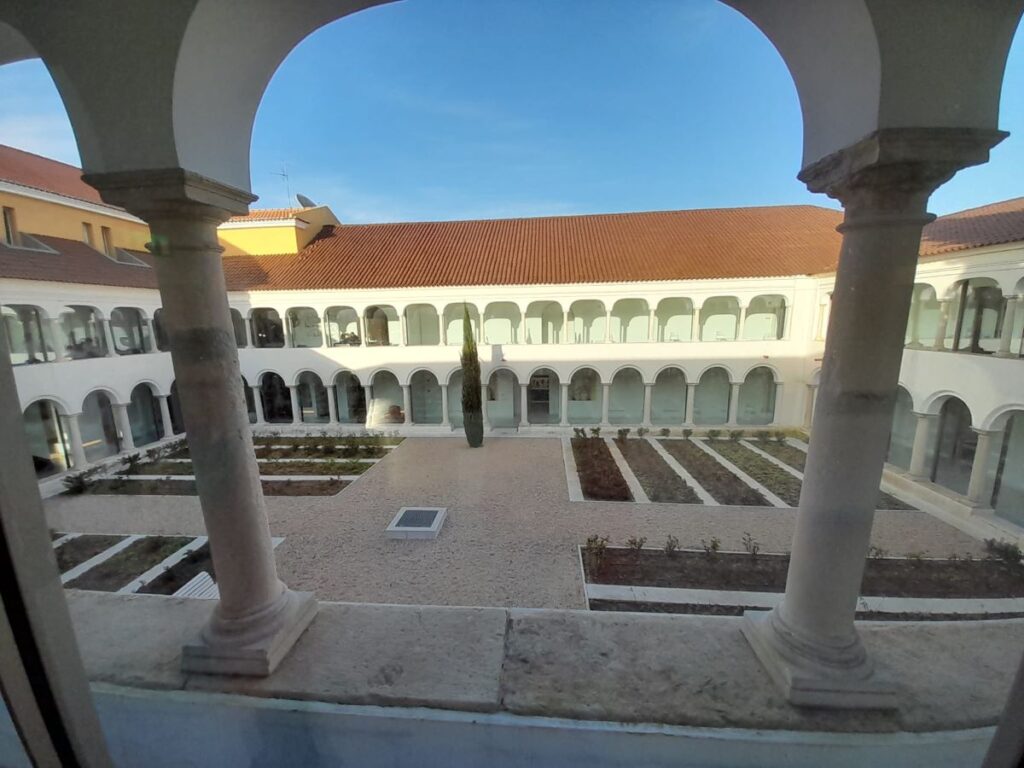
The MIAA, located in the former 16th century Convent of S. Domingos, is made up of 8 thematic centres. The MIAA is made up of 8 thematic nuclei, where you can see the preservation and dissemination of a valuable collection of pre- and proto-historic archaeological artefacts in stone, ceramics, bronze and other materials, which represent the economic and social life of various cultures and peoples who lived in the territory, organised into rooms: Roman Sculpture; Prehistory; Bronze Age and Iron Age; Classical Antiquity; Treasure (where there are many pieces of jewellery from prehistoric times); Art of the Middle Ages and Modern Age; Sculpture of the Middle Ages and Renaissance, and Painting by Maria Lucília Moita (donated to the Municipality).
